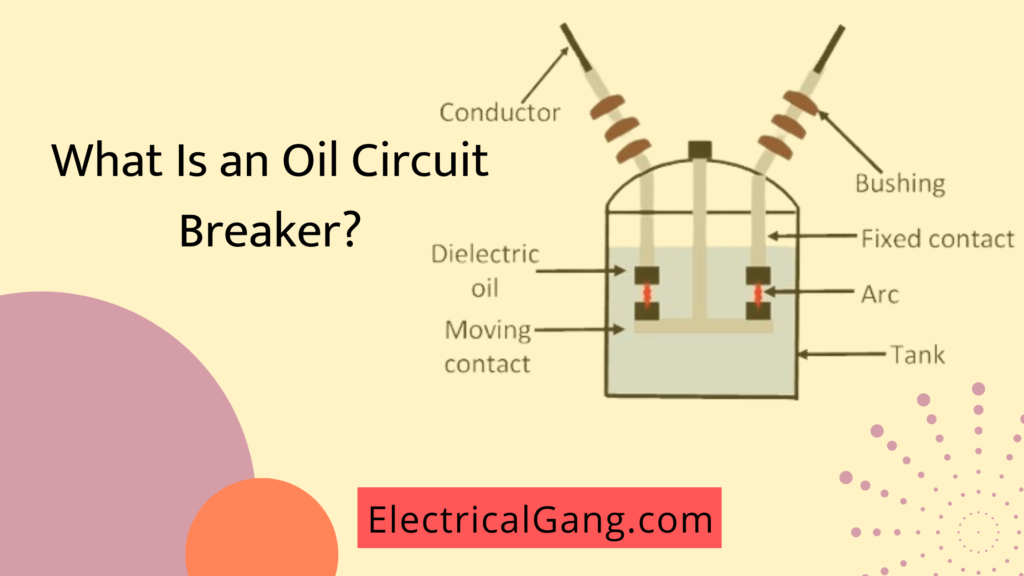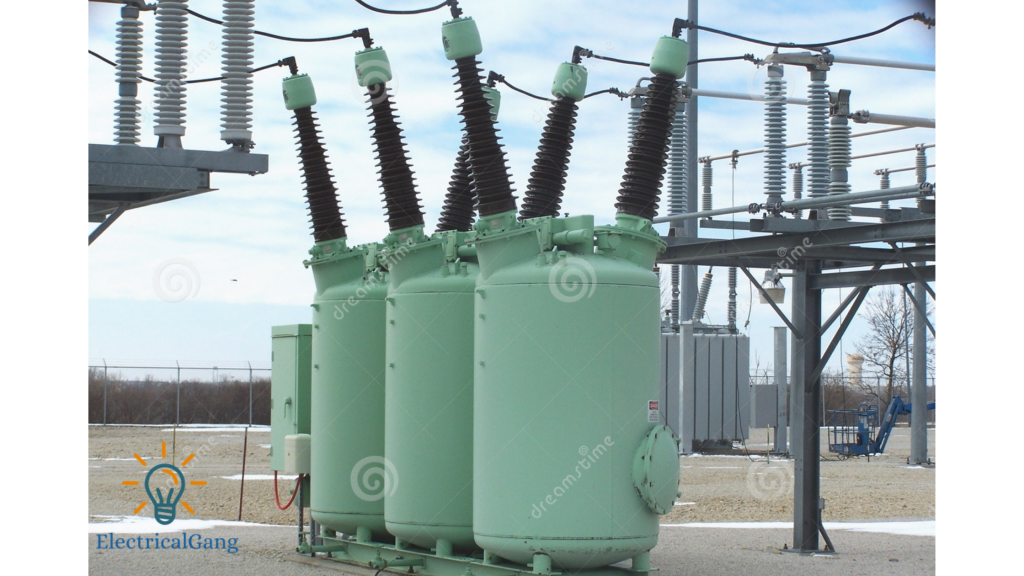
The oil circuit breaker is an extremely important and essential device in the electrical power system. This device helps in adjusting the power system. It is divided into different types depending on how it is used to reduce the arc
An oil circuit breaker is also a type of circuit breaker in which insulating oil is used in the form of arc quenching. Once a fault occurs in the system, the contacts of the circuit breaker will be disconnected and an arc will strike between the contacts. In today’s article, we will talk about what an oil circuit breaker is a working principle of why it is constructed, and much more about it.
Suggested Read: What is a Circuit Breaker | Types of Circuit Breakers
What is an Oil Circuit Breaker?

An oil circuit breaker is an old type of circuit breaker. It includes a separate contact. The main function of this contact is to separate the insulating oil. This includes good comparable properties to air which opens in the lower part of the breaker contact oil when a fault or problem occurs.
Once the arc strikes between the two breaking contacts, the heat around the arc will dissolve the oil around it and the high pressure will separate a certain amount of gaseous hydrogen. The peculiarity of this circuit breaker is that it is low cost and offers reliable operation and is easy to operate.
Suggested Read: What is a Conservator Tank of Transformer | Construction And Its Working
Construction of Oil Circuit Breaker:

Its construction method is simple compared to other circuit breakers. It consists of two contacts that can carry current. Which is placed inside a strong tank made of metal and this tank is completely filled with transformer oil.
An insulator between the transformer oil and its element and the earth acts as a means of extinguishing the arc. The top of the oil is filled with air into a tank that acts as a pad to handle the oil transferred to the gas formation in the area of the arc.
It absorbs the mechanical shock of the increasing speed of the oil. In this breaker, the oil tank will be bolted to prevent vibration while interrupting due to high currents. This includes a gas outlet fitted to the tank cover.
Suggested Read: What is Transformer Oil? | A Complete Guide
Working Principle of Oil Circuit Breaker:
Under normal conditions, these contacts are connected to each other, and the conduction of electric current becomes possible. When in the state of fault these contacts are separated from each other and an arc will strike between these contacts.
This arc generates a lot of heat and evaporates the oil around it. So this unstable growth will move the oil violently around this arc surrounded by gas. When the distance between the arc static and rotating contact reaches a certain critical value, the arc current and the recovery are based on the recovery voltage.
The function of this circuit breaker is very reliable and easy, inexpensive. This circuit breaker does not use any special type of device to stop the arc caused by the moving contact.
Types of Oil Circuit Breakers:
There are 2 types of oil circuit breakers.
| Sr.No | Types of Oil Circuit Breakers |
| #1. | Bulk Oil Circuit Breakers |
| #2. | Minimum Oil Circuit Breaker |
#1. Bulk Oil Circuit Breakers (BOCB):
Bulk Oil Circuit Breakers Large amounts of oil are used to destroy the arc so it is also known as the dead tank circuit breaker. As the name suggests, this breaker tank is placed on the ground potential. The amount of oil used in this system depends mainly on the voltage of the system.
For example, if the system voltage is 110kv, it uses 8 kg to 10,000 kg of oil Similarly, for 220 kV, 50,000 kg of oil is used in it
#2. Minimum Oil Circuit Breaker (MOCB):
This circuit breaker uses less oil than the Bulk Oil Circuit Breakers. The tank is mounted on a porcelain insulator to insulate the ground. It consists of an arch chamber enclosed inside a backlight paper
This Circuit Breaker consists of two parts. The upper part is porcelain which is closed with contacts while the other part is supported by porcelain. Bulk Oil takes up less space compared to Circuit Breakers. It is not used where frequent operations are required.
The main advantages of this circuit breaker are that it takes up less space, uses less oil, uses less oil, and weighs less so that the tank is smaller and therefore maintains less maintenance.
Suggested Read: Difference Between AC Motor And DC Motor
Maintenance of oil circuit Breaker:
Just as the maintenance of each machine is required, so too is the need for periodic maintenance. In maintenance such as checking the contact and changing it if necessary. A short circuit causes the circuit breaker to be interrupted. Arcting can often damage contacts.
Therefore, carbon can form in the area of dielectric oil contacts then its dielectric strength can be reduced and breaking capacity can be reduced. Therefore by replacing the oil and contacts, maintenance of the breaker for testing is required.
Advantages of oil circuit Breaker:
Some of the advantages of the oil circuit breaker are as follows:
- Occupies less space.
- The risk of fire can be reduced
- Maintenance is low.
- Low oil consumption.
- The dielectric strength of the oil is increased.
Disadvantages of oil circuit Breaker:
Some of the disadvantages of the oil circuit breakers are as follows:
- Consumption of less oil will increase the amount of carbonization.
- Gases inside the contact area are difficult to remove.
- Takes more time to the arc.
- It can create any volatile mixture by air.
- Do not allow interruptions with high speed.
Suggested Read: What is a Vacuum Circuit Breaker | Working Principle of Vacuum Circuit Breaker
Most Commonly Asked Questions:
Where are oil circuit breakers used?
The minimum oil circuit breaker operates at high speeds and is used in transmission networks and substations. This type of circuit breaker is not a live tank design, it only needs a small amount of oil.
What does an oil circuit breaker do?
The oil circuit breaker is an old type of circuit breaker. It includes a separate contact. The main function of this contact is to separate the insulating oil. This includes good comparable properties to air which opens in the lower part of the breaker contact oil when a fault or problem occurs.
How many Types of Oil Circuit Breakers?
There are 2 types of oil circuit breakers.
- Bulk Oil Circuit Breakers.
- Minimum Oil Circuit Breaker.
What type of circuit breaker is used in houses?
Miniature circuit breakers (MCBs), Earth leakage circuit breakers (ELCBs), and Residual current circuit breakers (RCCBs) are the most widely used electrical circuit breakers in-home electrical connections.
Like this post? Share it with your friends!
Suggested Read –
- What is a Signal Isolator? | A Complete Guide
- Highway/Street Light Names And Functions
- How to Fix YouTube TV Freezing Issues in Easy Steps
- How to Solve LG Content Store Not Working Problem?
- What is a Phototransistor | Construction of Phototransistor
- What is a Single Phase Transformer | Construction of Single Phase Transformer
I have read so many content on the topic of the blogger lovers
but this piece of writing is really a good paragraph, keep it up.